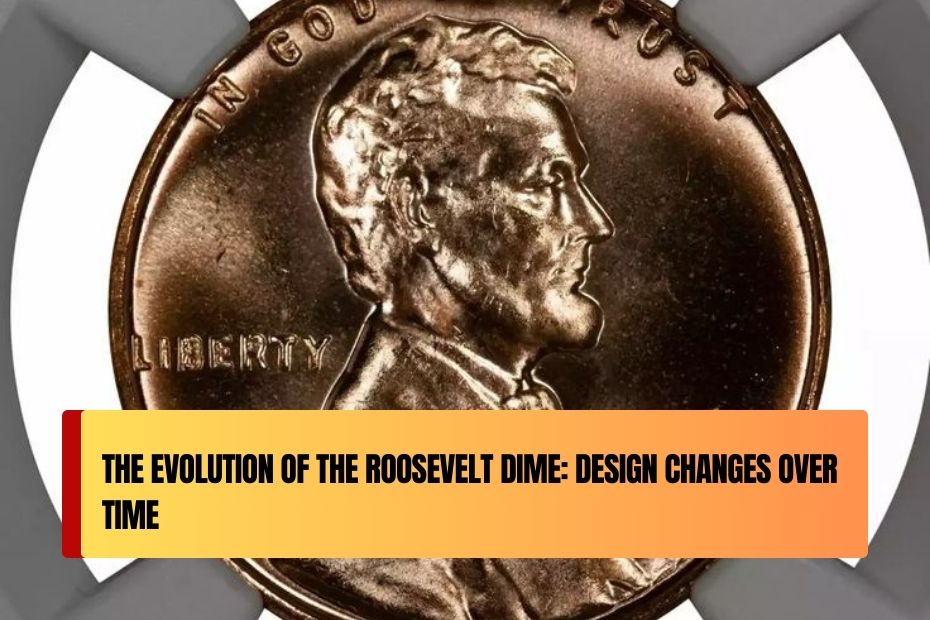The Roosevelt dime is one of the most familiar coins in American currency, featuring the image of President Franklin D. Roosevelt. Introduced in 1946 to honor the late president, the coin has undergone several design changes over the years. While the basic design of the Roosevelt dime has remained largely the same, there have been adjustments to improve its look, security, and production methods. In this article, we will explore how the Roosevelt dime has evolved over time, from its original design to the modern versions we see today.
The Beginning of the Roosevelt Dime (1946)
The Roosevelt dime was first introduced in 1946, replacing the mercury dime. The decision to put Roosevelt on the dime came after his death in 1945. President Roosevelt had been an important figure in American history, serving as the 32nd president and leading the country through the Great Depression and World War II. His image was chosen to symbolize his leadership and contributions to the country.
The original design featured a profile of Roosevelt, facing left, with the inscription “LIBERTY” above and “IN GOD WE TRUST” to the right. The reverse side displayed a torch, an olive branch, and an oak branch, representing liberty, peace, and strength. This design, created by artist John R. Sinnock, has remained a fundamental part of the coin ever since.
Changes in the Roosevelt Dime Design Over Time
Though the Roosevelt dime has mostly stayed the same, there have been small design changes and updates made to improve the coin’s durability, security, and appearance. Here are some of the key design changes that have occurred since its introduction:
1. Addition of the “S” Mintmark (1946)
The first Roosevelt dimes were minted without a mintmark, but by 1946, a small “S” mintmark was added to dimes produced at the San Francisco Mint. The mintmark was included to distinguish coins produced at different U.S. Mint locations. Over the years, dimes have been produced at several mints, including Denver (D) and Philadelphia (no mintmark). This change made it easier for collectors to identify coins from specific mints.
2. The Transition to Copper-Nickel Composition (1965)
One of the most significant design changes for the Roosevelt dime occurred in 1965. Prior to this year, the dimes were made from 90% silver and 10% copper. However, due to the rising cost of silver and the desire to save money on coin production, the U.S. Mint switched to a copper-nickel alloy for the dime in 1965. The new composition made the coin more durable and cheaper to produce. The design on the coin remained largely the same, but the appearance of the coin became slightly different due to the new metal mixture.
3. The 1982 Minting and New Edge Design
In 1982, a subtle change was made to the Roosevelt dime. The U.S. Mint started adding a reeded edge to the coin, which added a tactile feature to the dime. This change helped prevent people from shaving off small amounts of metal from the edge of the coin, a practice that had been used to alter the coin’s value.
4. Modern Security Features (2000s)
In the 2000s, as part of the U.S. Mint’s efforts to improve coin security and prevent counterfeiting, small changes were made to the design of the Roosevelt dime. These changes included adding micro-sized elements like tiny ridges and fine lines, which are difficult to reproduce and help protect against fake coins. The goal was to keep the dime as secure as possible while still maintaining the familiar design that people recognized.
5. The 50th Anniversary Commemorative Dime (1996)
In 1996, the U.S. Mint released a special 50th-anniversary edition of the Roosevelt dime. This version was created to mark the 50th anniversary of the coin’s first production in 1946. The design remained the same, but the coin was issued in proof quality, meaning it was struck with a higher level of detail and polish. These commemorative dimes are often more valuable to collectors due to their special edition status and higher quality.
Table: Key Design Changes in the Roosevelt Dime
| Year | Design Change | Description |
|---|---|---|
| 1946 | Introduction of the Roosevelt Dime | First minted, featuring Roosevelt’s portrait. |
| 1946 | Addition of the “S” Mintmark | Mintmark added to coins produced in San Francisco. |
| 1965 | Transition to Copper-Nickel Composition | Silver content replaced by copper-nickel alloy. |
| 1982 | Reeded Edge | Added reeded edge to prevent coin shaving. |
| 1996 | 50th Anniversary Edition | Special commemorative proof coin released. |
| 2000s+ | Modern Security Features | Small micro-sized elements added for security. |
Why Are These Changes Important?
Each of these changes to the Roosevelt dime design has been made to address different issues, from production costs to coin security. The switch to copper-nickel in 1965, for example, helped make the dime more affordable to produce, while the introduction of security features in the 2000s helped protect against counterfeit coins.
The changes to the Roosevelt dime also reflect the changing times in the United States. As the country faced new challenges and advancements in technology, the U.S. Mint adapted the coin’s design to meet these needs while keeping the coin’s historical significance intact.
Conclusion
The Roosevelt dime has remained a beloved and important part of U.S. currency since its introduction in 1946. While its overall design has stayed consistent, the coin has undergone several changes over the years to improve its production, durability, and security. Whether it’s the switch to a copper-nickel composition or the addition of modern security features, each change to the Roosevelt dime has contributed to its lasting popularity. Today, the Roosevelt dime continues to be a staple of American coinage, loved by both collectors and everyday people.
FAQ’s
1. Why was the Roosevelt dime created?
The Roosevelt dime was created in 1946 to honor President Franklin D. Roosevelt after his death. He was an important figure during the Great Depression and World War II.
2. What was the original metal used for the Roosevelt dime?
The original Roosevelt dimes were made from 90% silver and 10% copper. This changed in 1965 when the U.S. Mint switched to a copper-nickel alloy.
3. Why did the U.S. Mint switch to copper-nickel for dimes in 1965?
The switch to copper-nickel was made due to rising silver prices, which made it too expensive to continue using silver in coin production.
4. What is the significance of the 1996 Roosevelt dime?
The 1996 Roosevelt dime marked the 50th anniversary of the coin’s introduction. A special proof version of the coin was issued to celebrate this milestone.

